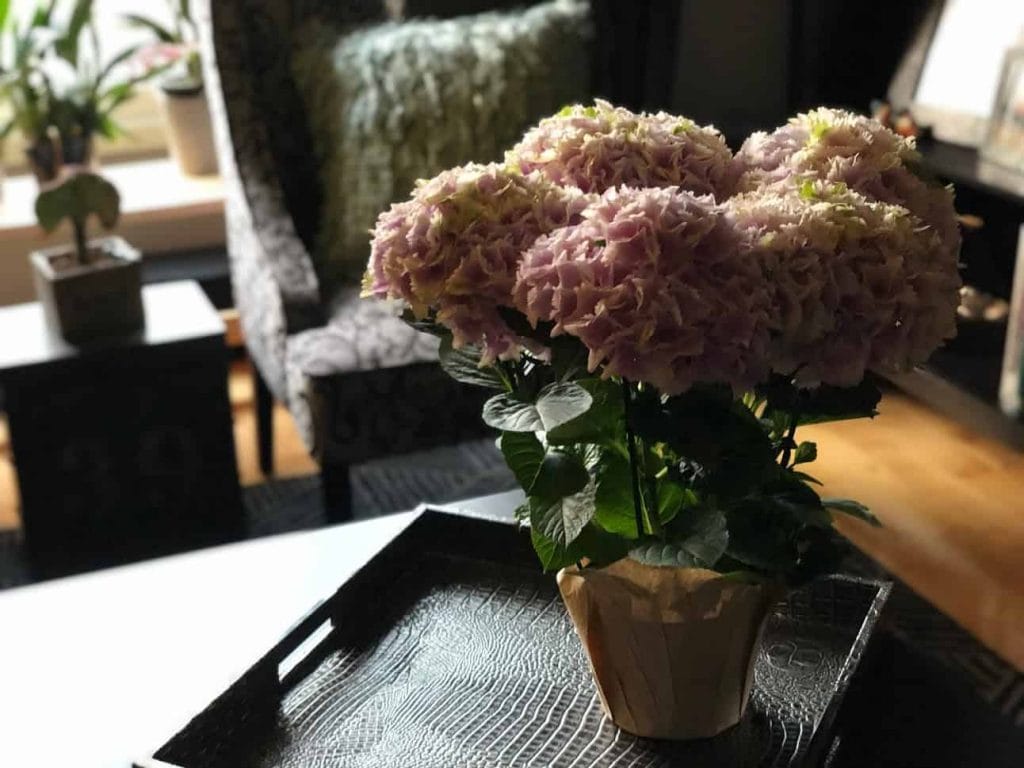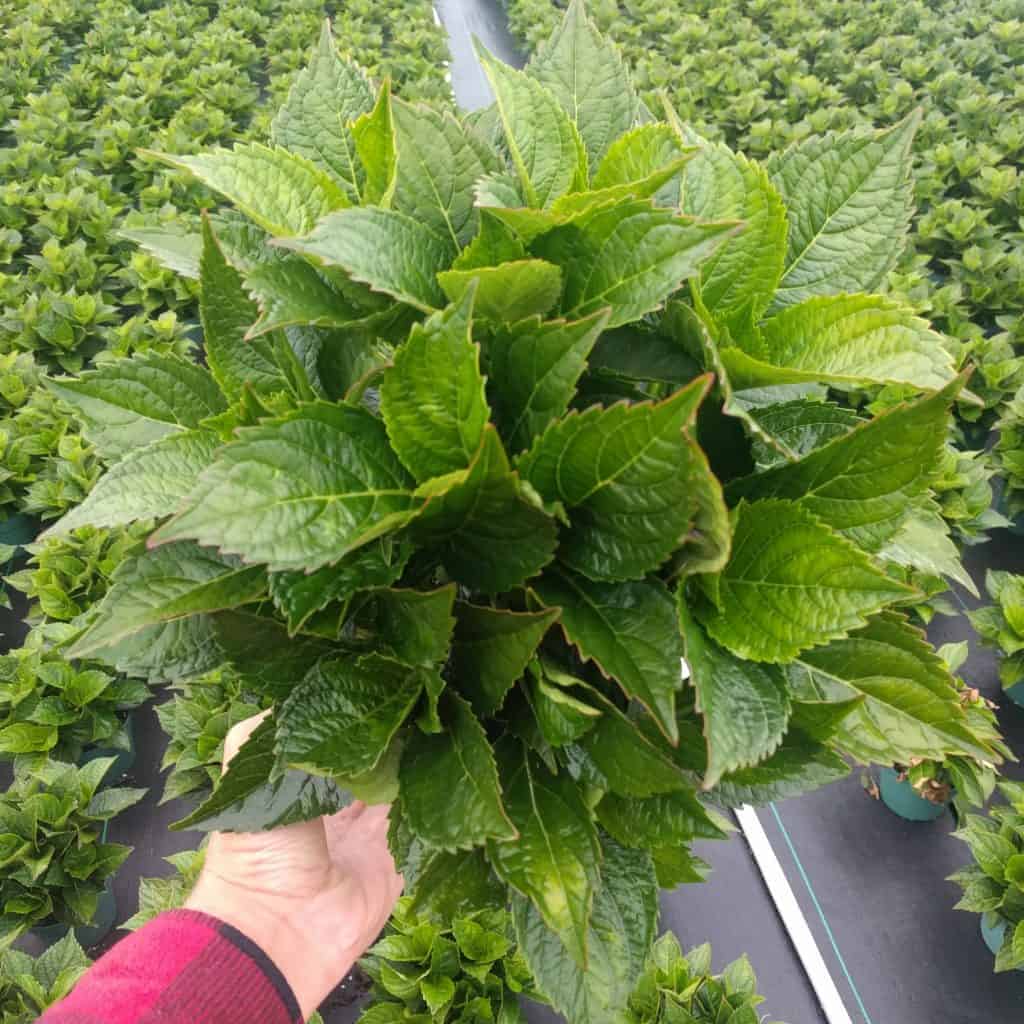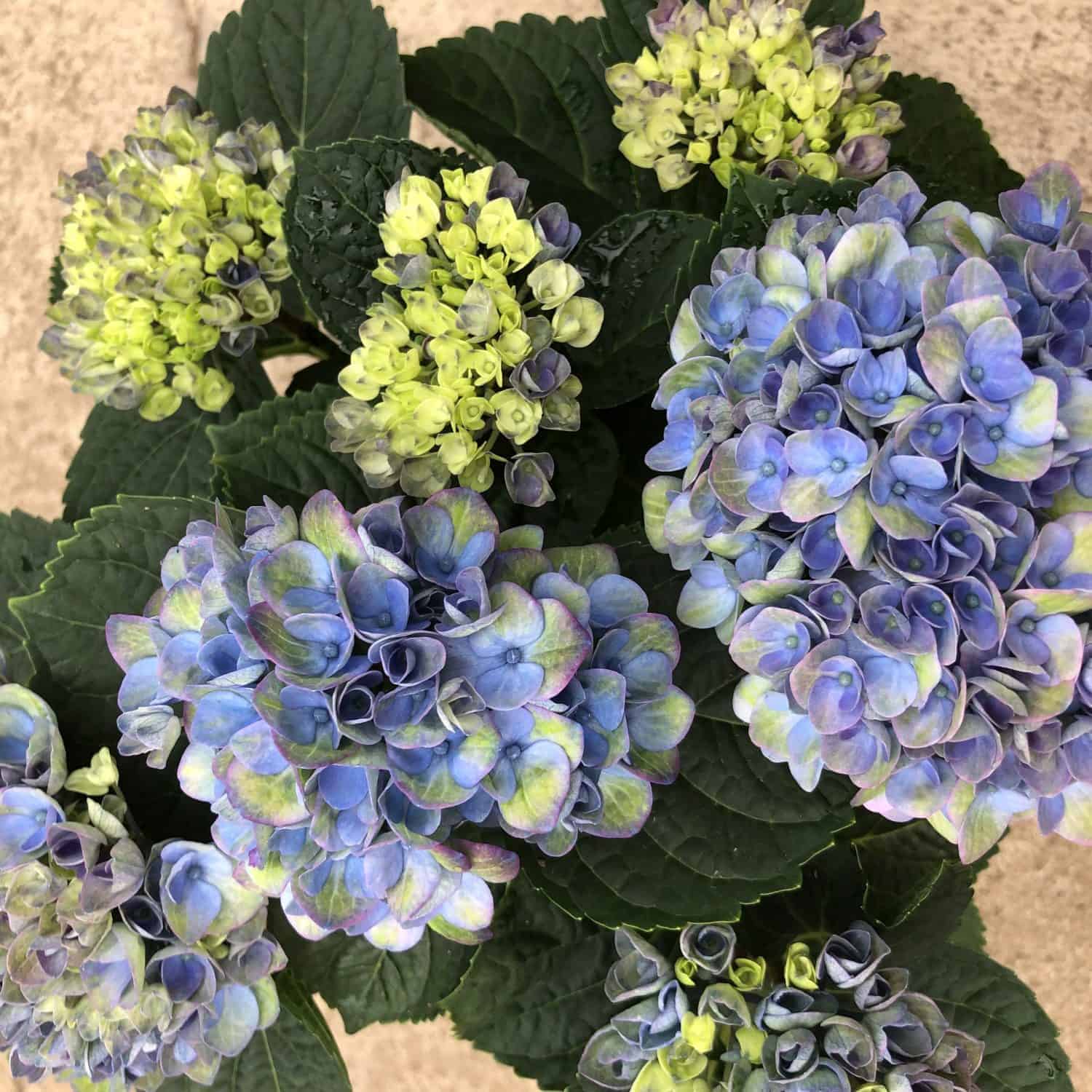Congratulations on buying a Kamps Hydrangea!
With proper care your new plant should last weeks in your house and for years in your garden.
Congratulations on buying a Kamps Hydrangea!
With proper care your new plant should last weeks in your house and for years in your garden.

Your hydrangea likes partial sun and having moist soil. A good way to water your hydrangea is to let it sit in a plate of water for 15 minutes every other day. After 15 minutes, be sure to drain away any excess water to prevent root death by drowning. If your Hydrangea is in a decorative cover or pot without drainage, water with 8-10oz of water every other day.
If the plant starts to wilt it needs water immediately. Wilting can also occur due to overwatering. A good test is to check the top of the soil. If it is light brown and dry, it probably needs water. If its dark brown and wet, it’s had enough water.

My Hydrangea says not suitable for the garden?! Don’t fret! We ship Hydrangeas across all of North America and many customers ask us about this. A Hydrangea is a perennial plant but most Hydrangea Macrophylla (the type you just bought) are bred for the indoor/florist market. A Hydrangea will always come back in zones 5 and up but whether or not it has flowers is the question. See the planting section for our best tips and tricks.
Your zone and the variety that you have will determine if you will have success with your hydrangea in the garden.
Most hydrangeas can reliably over-winter in zones 5 and above. And generally the Everlasting Series by Plants Nouveau are more suited for the garden.

You should plant your hydrangea in the springtime after the threat of frost is gone in your area.
Choosing an appropriate spot is the most important factor in giving your hydrangea a chance to thrive in your garden. Choose a spot that is protected from the afternoon sun and that will offer some shelter from the winter if you are in a cold climate. The north side of your house is always a great choice. Gardeners have the most success if they plant their Hydrangea close to a building or in a protected spot as the frigid winds of winter is what most often kills the flowers that were set the previous late Summer and Fall. Hydrangea Macrophylla set their flowers in the previous years summer and fall. Those flower buds need to survive the winter in order to produce flowers in the spring/summer of the next year! This is why it is very important to plant your Hydrangea in a protected area and to mulch the root ball in the fall.
Dig a hole that is 50% larger than the pot size and surround the plant with a high quality black earth or manure based soil. It’s best to disturb the bottom of the root ball to help the roots to branch out. After planting water heavily.

In the first year your hydrangea will require lots of care to get established. We recommend watering your planted Hydrangea every day especially during July and August! A Hydrangea will often wait until the fall to really establish it’s roots. It may take 1-2 years for the plant to fully establish in it’s spot. Once it has established itself, you’ve gained yourself a lifelong garden companion!
Pruning is a very important part of Hydrangea care and many gardeners get confusing information! Because Hydrangea Macrophylla set their flowers on old wood (last years growth), it is very important to not prune them heavily in the spring or fall. We recommend gardeners prune off the tops of the dead wood once the plant has begun to bud in early spring. This will keep the plant looking healthy. Keep an eye on the stems and look for the flower buds that are growing. Make sure to not prune off any of the stems with new growth coming! The flowers will be growing from these buds and buds near the root ball. If you prune it too low, you might be cutting all of those hard-earned flowers off!